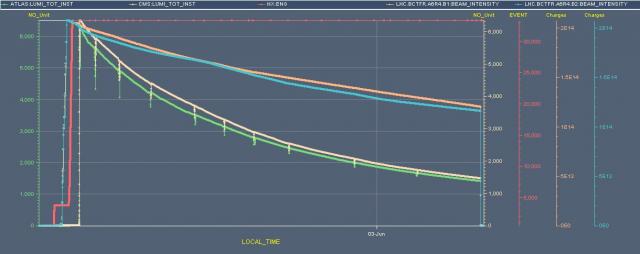The orbits of protons in the 27-kilometre Large Hadron Collider (LHC) have to be adjusted regularly to account for the gravitational effect of the moon.
In the graph above, the two lower curves (in beige and green) show the instantaneous luminosity measured last weekend – when the moon was full – by the two largest detectors at the LHC, CMS and ATLAS. Instantaneous luminosity is a measure of how many collisions happen per second in each experiment between the two beams of protons circulating in opposite directions in the LHC tunnel.
The LHC is so large that the gravitational force exerted by the moon is not the same at all points, which creates small distortions of the tunnel. And the machine is sensitive enough to detect minute deformations created by the small differences in gravitational force across its diameter.
As the moon rises in the sky, the force it exerts changes enough to require a periodic correction of the orbit of the proton beams in the accelerator to adapt to a deformed tunnel. The corrections appear as regular dips in luminosity (see graph above) as the LHC operator adjusts the orbits.
Find out more:
- Quatum Diaries: Is the moon full? Just ask the LHC operators

